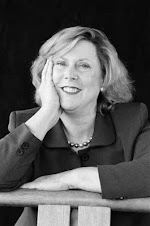Moody’s Bistro is practically an institution in Truckee,
always jammed with diners and music lovers.
It has a busy bar as well as dining room, and you’ll find many
interesting wines by the glass, served from a bottle or on tap, as well as full
bottles.
JJ Morgan, the owner and wine director, chooses his wines
both for affordability and uniqueness.
“I want to offer my customers a nice selection of wines that can’t be
found in the supermarket, and I like to find wines from many
appellations,” he said.
One of the white wines-on-tap is the Tablas Creek Patelin de Tablas Blanc 2001,
a blend of four Rhone varietals: Grenache
Blanc, Viognier, Marsanne, and Roussanne. Fruit from eight vineyards in Paso
Robles is selected for this blend, and it has a rich mouthfeel and crisp
acidity. The aroma is both floral and
fruity, with taste of peach, lemon and a creamy texture. 13.3 percent alcohol. The wines-on-tap list changes, and prices
range from $8-13 per glass.
 |
| 2011 Napa Slingshot Cabernet Sauvignon |
The 2011 Slingshot
Cabernet Sauvignon, Napa, is a wine
crafted by winemaker James Stewart, well known for his high-end Cabernets. I got a kick out of the label, which cited
the wine as “irreverently made in Napa Valley”. Its ripe aroma of berries, currants and dried herb with oak is classic,
and the mouthfeel shows a tannic and medium-body. Flavor of berries,
dark cherries, currants and herbs follow on, with a bit of astringency in the
long finish. 14.5 percent alcohol.
$12 the glass.
 |
| 2012 Luli Pinot Noir, Santa Lucia Highlands |
My personal favorite in this tasting was the 2012 Luli Pinot
Noir, Santa Lucia Highlands. I might be
looking on the internet to acquire a few bottles; it is that good. Luli
Wines are made by the famous Pisoni family, who partners in this brand with
Master Sommelier Sara Floyd. It is a
fruit-driven wine, with typical Santa Lucia Highlands flavor of juicy dark
cherries, cola, sweet spices and mint. The
aroma is vibrant, and the finish is long with firm tannins. 14.7 percent alcohol $14 the glass.
 |
| Turley 2012 Napa White Zinfandel |
The Turley 2012 White Zinfandel, Napa is a bright dry rose. Aroma
of orange blossom and raspberry lead to a refreshing light wine. 11.4
percent alcohol $12 the glass.
 |
| Decoy 2012 Merlot, Sonoma County |
We ended the tasting with Decoy’s 2011 Merlot, Sonoma
County. Winemaking notes cite “aromas of strawberry compote, plum and
cherry wood, supported by hints of clove and cinnamon from the well-integrated
oak. The red fruit continues on the palate with layers of fresh strawberry and
raspberry. Bright acid lengthens the finish, which concludes with soft, mature
tannins.” Decoy is a secondary label of Duckhorn. 13.5 percent alcohol $15 the glass.
Moody’s Bistro is located at 10007 Bridge St Truckee, CA 96161.
www. Moodysbistro.com. (530) 587-8688
~~~~~~~~~~~~~~~~~~~~~~~~~~~~~~~~
This review appeared in Wine Time, a column written for The Tahoe Weekly, on October 31, 2013. You can find this and other Wine Time columns in the online edition of The Tahoe Weekly.
~~~~~~~~~~~~~~~~~~~~~~~~~~~~~~~~
This review appeared in Wine Time, a column written for The Tahoe Weekly, on October 31, 2013. You can find this and other Wine Time columns in the online edition of The Tahoe Weekly.


















.jpg)
.jpg)



